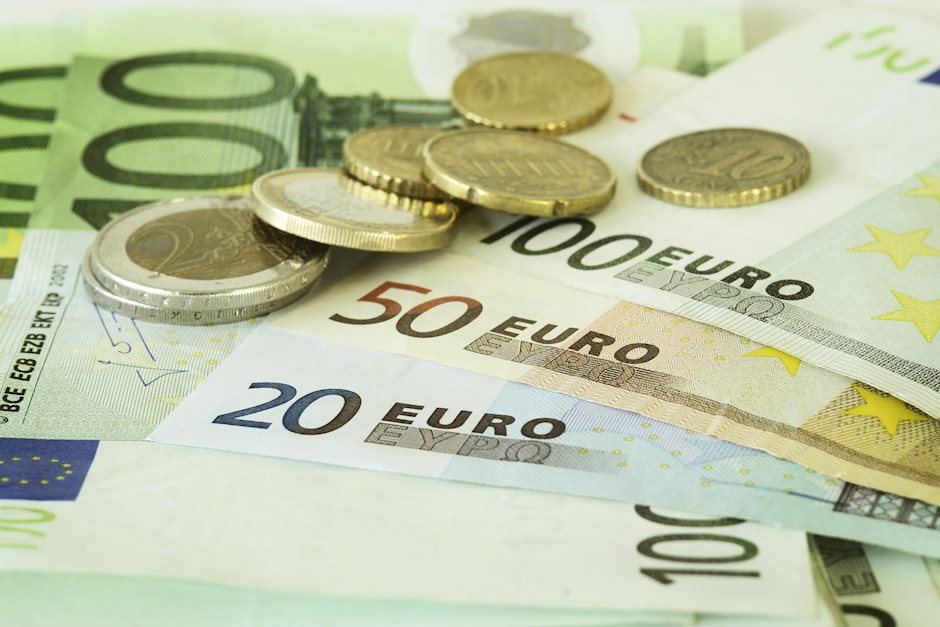EUR/USD holds steady with US inflation figures over the horizon
- EUR/USD remains capped below 1.0950 as market look for a reason to move.
- Key US inflation data due in the midweek to set the tone.
- EU GDP growth figures also on the docket this week.

EUR/USD continued to churn chart paper just south of 1.0950 as markets settle in for the wait to Wednesday’s key US Consumer Price Index (CPI) inflation print. US Producer Price Index (PPI) business-level inflation figures are on the docket for Tuesday, and markets are hoping for a continued easing in structural inflation pressures. Core PPI for the year ended in July is forecast to ease to 2.7% from the previous 3.0%.
Forex Today: US Producer Prices… for starters
Wednesday’s YoY core CPI inflation is likewise expected to tick down to 3.2% from the previous 3.3%. Markets have trapped themselves in a Goldilocks forecast scenario; if CPI comes in too high, market sentiment will take a hit. On the other hand, if CPI comes in too low, it could spark another fear-fueled pullback, leaving the only topside option available to equities a soft but not too soft inflation print.
Rate markets have eased back on bets of a double-cut in September, according to the CME’s FedWatch Tool. Rate traders now see less than 50% odds of a 50-bps cut on September 18, down from last week’s 70% odds. Despite the chill in bets for a double-cut, rate markets are still pricing in 100% odds of at least a 25-bps cut from the Fed in September.
Pan-EU Gross Domestic Product (GDP) figures are due early Wednesday, with headline growth figures forecast to hold steady at previous levels, and that will wrap up the Euro’s meaningful representation on the economic calendar this week.
Economic Indicator
Producer Price Index (MoM)
The Producer Price Index released by the Bureau of Labor statistics, Department of Labor measures the average changes in prices in primary markets of the US by producers of commodities in all states of processing. Changes in the PPI are widely followed as an indicator of commodity inflation. Generally speaking, a high reading is seen as positive (or bullish) for the USD, whereas a low reading is seen as negative (or bearish).
Read more.Next release: Tue Aug 13, 2024 12:30
Frequency: Monthly
Consensus: 0.1%
Previous: 0.2%
Source: US Bureau of Labor Statistics
EUR/USD price forecast
Fiber continues to trade on the high side of a rough descending channel that has weighed on EUR/USD for the duration of 2024. The pair is holding just outside of recent technical ceiling barriers, but bullish momentum remains crimped below 1.1000.
A rising pattern of higher lows is solidifying on daily candlesticks, but EUR/USD is still poised for another dip back into the 200-day Exponential Moving Average (EMA) near 1.0800 if bidders don’t return to the fold and get EUR/USD bolstered into fresh near-term highs.
EUR/USD daily chart

Euro FAQs
The Euro is the currency for the 20 European Union countries that belong to the Eurozone. It is the second most heavily traded currency in the world behind the US Dollar. In 2022, it accounted for 31% of all foreign exchange transactions, with an average daily turnover of over $2.2 trillion a day. EUR/USD is the most heavily traded currency pair in the world, accounting for an estimated 30% off all transactions, followed by EUR/JPY (4%), EUR/GBP (3%) and EUR/AUD (2%).
The European Central Bank (ECB) in Frankfurt, Germany, is the reserve bank for the Eurozone. The ECB sets interest rates and manages monetary policy. The ECB’s primary mandate is to maintain price stability, which means either controlling inflation or stimulating growth. Its primary tool is the raising or lowering of interest rates. Relatively high interest rates – or the expectation of higher rates – will usually benefit the Euro and vice versa. The ECB Governing Council makes monetary policy decisions at meetings held eight times a year. Decisions are made by heads of the Eurozone national banks and six permanent members, including the President of the ECB, Christine Lagarde.
Eurozone inflation data, measured by the Harmonized Index of Consumer Prices (HICP), is an important econometric for the Euro. If inflation rises more than expected, especially if above the ECB’s 2% target, it obliges the ECB to raise interest rates to bring it back under control. Relatively high interest rates compared to its counterparts will usually benefit the Euro, as it makes the region more attractive as a place for global investors to park their money.
Data releases gauge the health of the economy and can impact on the Euro. Indicators such as GDP, Manufacturing and Services PMIs, employment, and consumer sentiment surveys can all influence the direction of the single currency. A strong economy is good for the Euro. Not only does it attract more foreign investment but it may encourage the ECB to put up interest rates, which will directly strengthen the Euro. Otherwise, if economic data is weak, the Euro is likely to fall. Economic data for the four largest economies in the euro area (Germany, France, Italy and Spain) are especially significant, as they account for 75% of the Eurozone’s economy.
Another significant data release for the Euro is the Trade Balance. This indicator measures the difference between what a country earns from its exports and what it spends on imports over a given period. If a country produces highly sought after exports then its currency will gain in value purely from the extra demand created from foreign buyers seeking to purchase these goods. Therefore, a positive net Trade Balance strengthens a currency and vice versa for a negative balance.
Author

Joshua Gibson
FXStreet
Joshua joins the FXStreet team as an Economics and Finance double major from Vancouver Island University with twelve years' experience as an independent trader focusing on technical analysis.

















